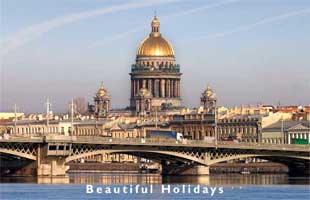Classical Europe
Beautiful European Holidays


Florence in Italy was the birthplace of the Renaissance, which had a profound effect on art, architecture, politics and culture of Europe, and much of the rest of the world. This is the top place in Europe for art. There are more than 70 museums, including the Uffizi Gallery, Bargello, the Accademia Gallery, which features Michaelangelo’s David, and many others. There’s also the cathedral and the palazzo, for yet more amazing pictures and sculptures. When you’re beginning to feel a bit jaded, have a break and wander the streets and admire the incredible buildings and bridges.
Paris has many top galleries. The most famous two are probably the Louvre, the home of the Mona Lisa, and the Musee d’Orsay, which is one of the best places in the world to see impressionist art – it’s stuffed with famous and popular paintings. The Pompidou Centre is something of an attraction in itself, and houses a collection of modern art. The Musee en Herbe is aimed at kids, and features a lot of interactive exhibits. There are also numerous pavement artists and cartoonists in Paris, where you can have your own piece of art produced as a souvenir.
St Petersburg has art galore. The Hermitage alone has more than three million pieces; Michaelangelos, Faberge pieces designed for the Russian nobility, paintings by Rembrandt and many other fantastic treasures. However, there’s more in the rest of the city – numerous ornate churches and cathedrals, Menshikov Palace and others. St Petersburg is also a famous centre for opera and ballet – try and see a performance before you go.
Ticket arrangements can be complicated – some museums charge more for foreign tourists, some have student discounts, some have elaborate arrangements for camera and cloakroom tickets. At busy museums, it’s sometimes possible to arrange advance tickets that allow you to effectively jump the queue at the ticket office, which can save hours. If you’re on a tour, then you’re unlikely to have to worry about any of this – however, not all tours will include absolutely everything you want to see.
Some cities have a card scheme that allows you entry into a number of museums for a one-off payment, and sometimes includes discounts on a range of other attractions. Check before you start making one-off payments.
If you fancy splashing out on some art home with you, then check what you are and aren’t allowed to take out of the country. Most European countries have some sort of regulations in place preventing valuable pieces from being casually removed.
